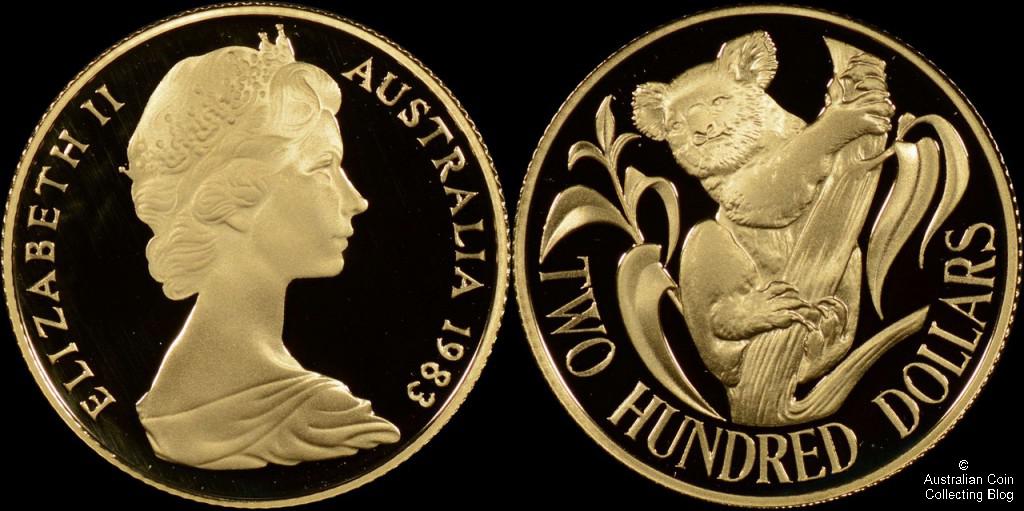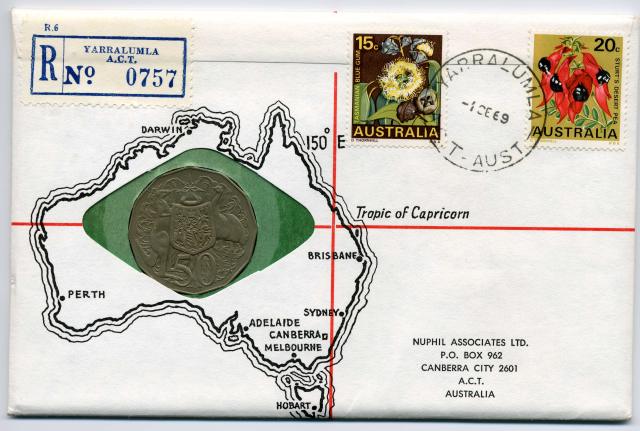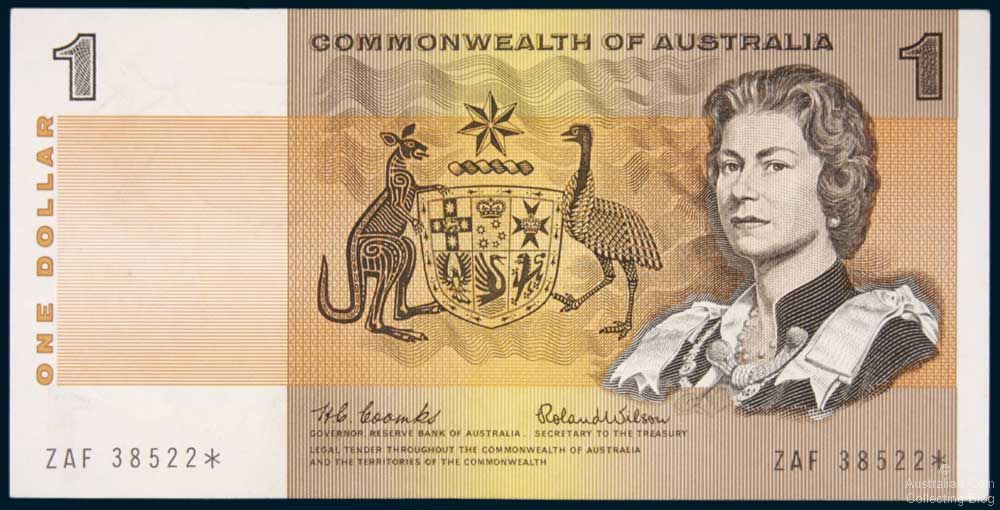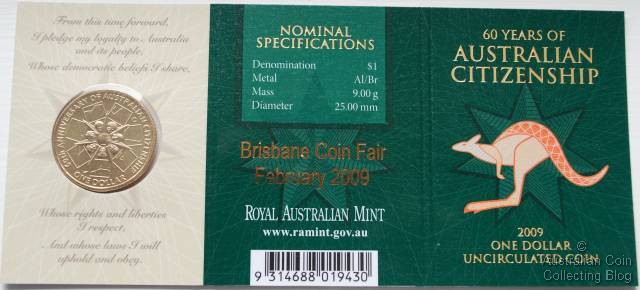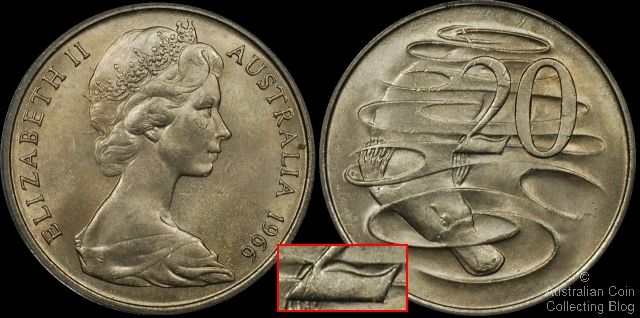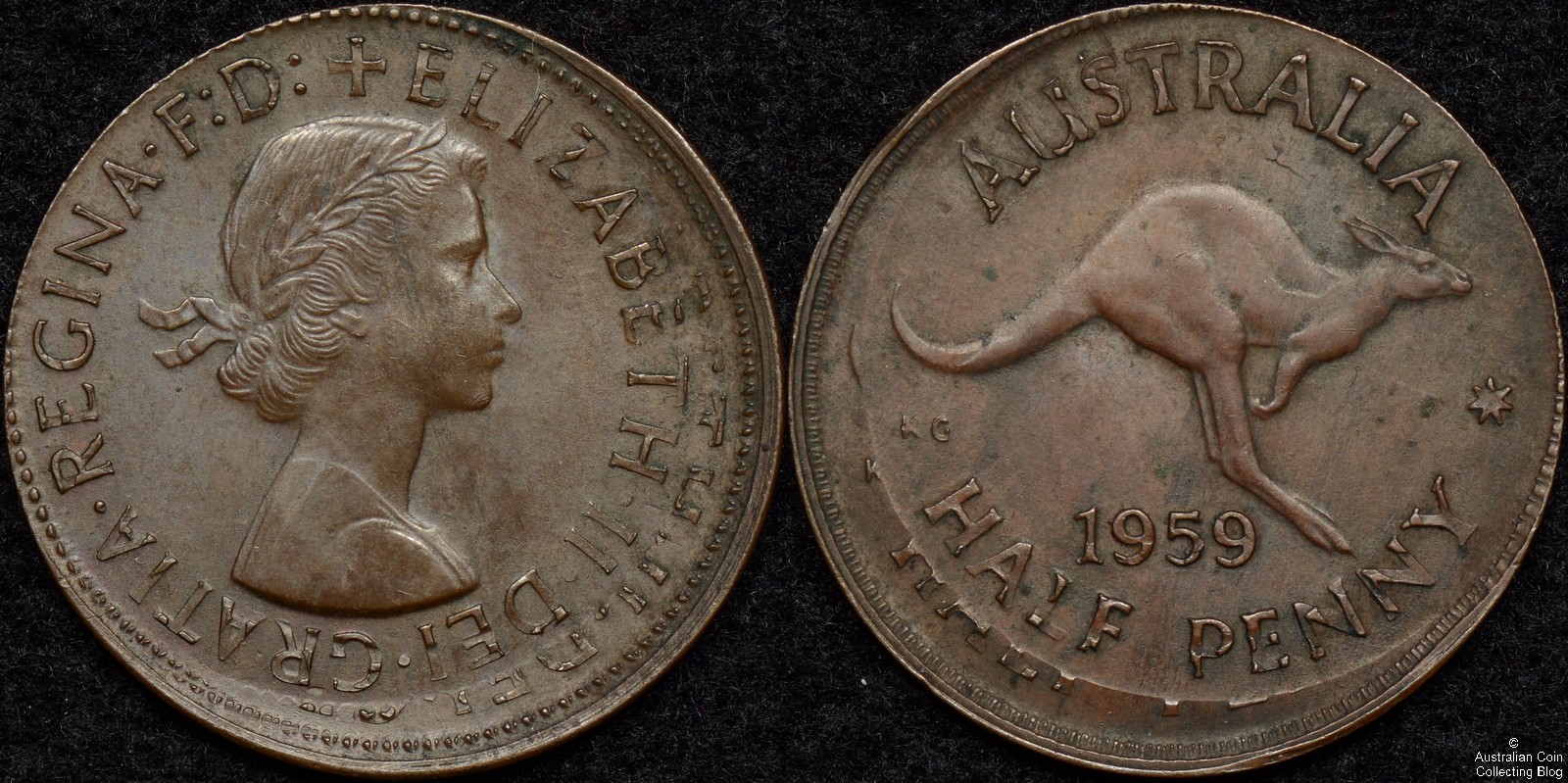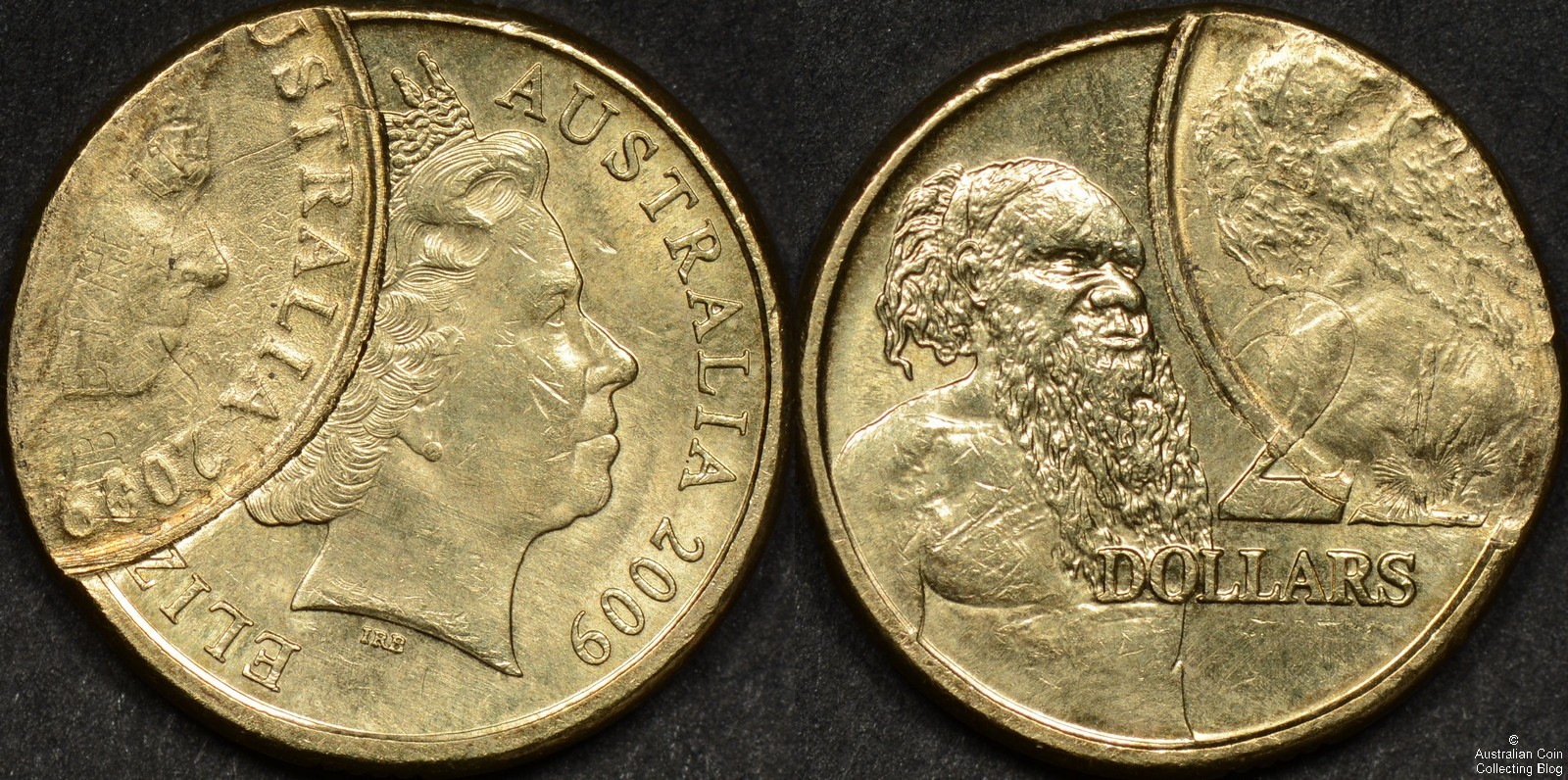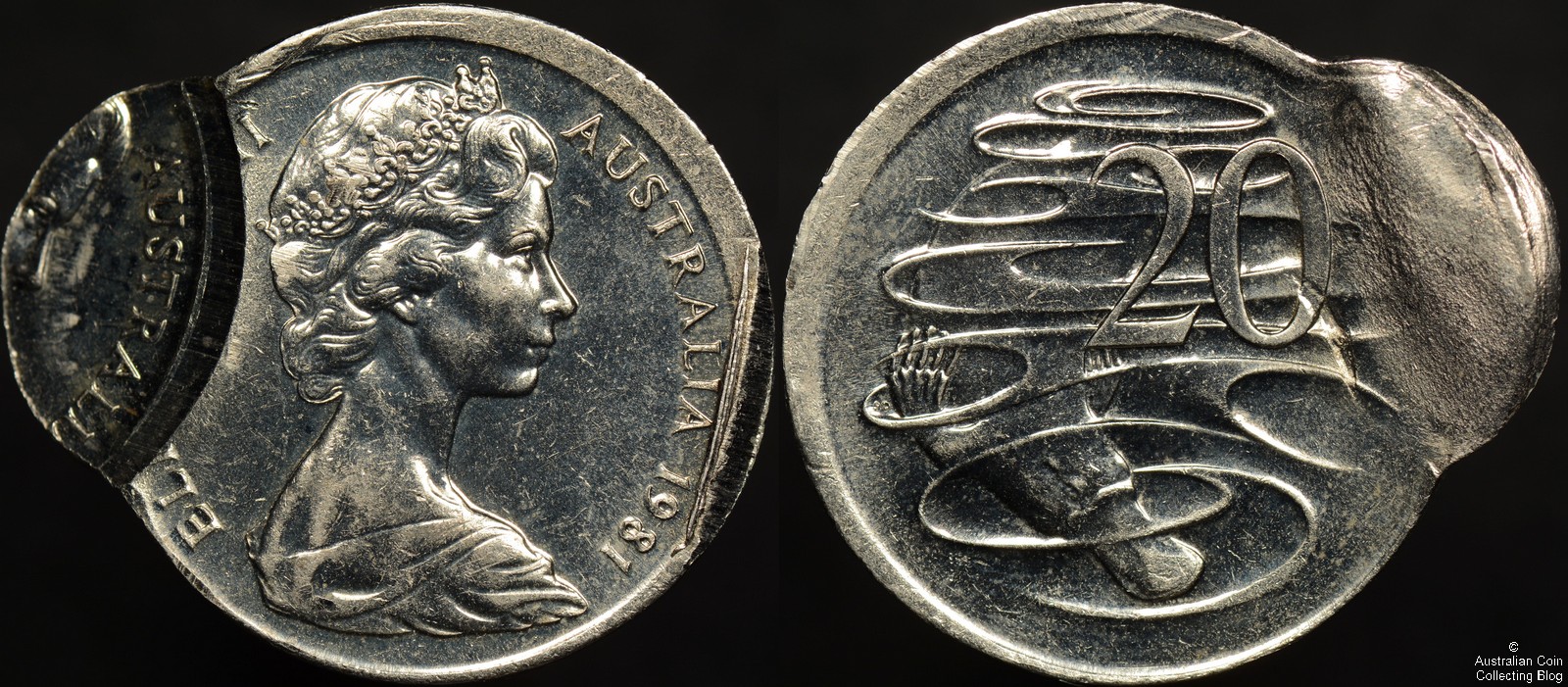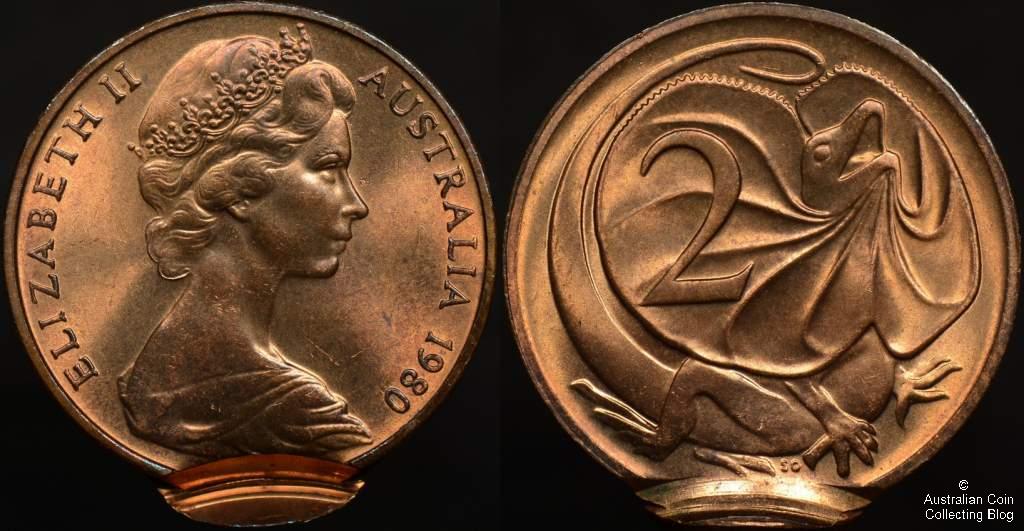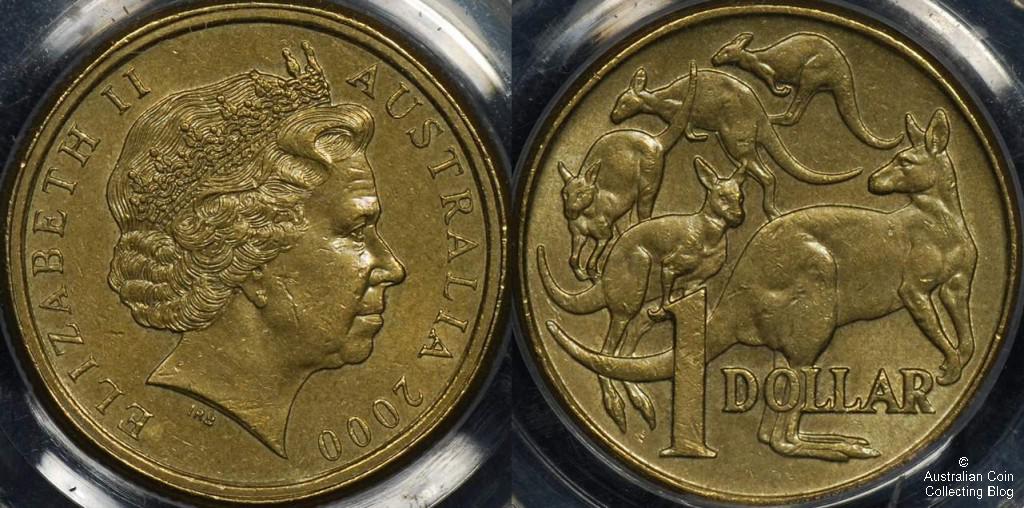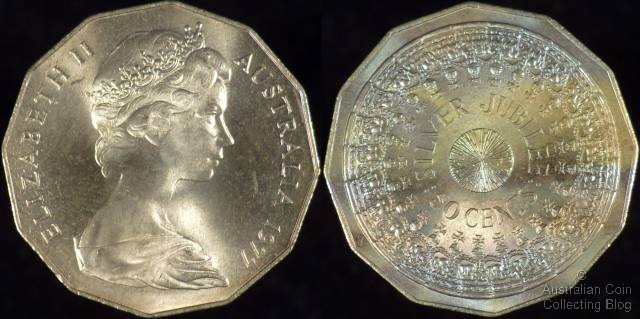
Australian 1977 Silver Jubilee 50 cent
One of the most popular Australian coins to collect is the 50 cent coin. And one of the most popular question about Australian coin values that we get is of course, about what is the value of Australian 50 cent coins that can be found in your change. That’s because the 50 cent coin is big, it has been issued with many different commemorative designs since it’s release in 1966 and the large size of the coin means the designs really stick out when you receive them in change. Sometimes you’ll get a 50 cent in your change and you’ll turn it over and Captain Cook will stare back at you and you’ll either have never seen one before or not have seen one for years and you’ll think….how much is that worth? It must be worth something right? It was minted 38 years ago and you almost never see them any more! Surely an old Australian 50 cent coin is worth some money? After all, some of them are more than 40 years old now!
Well a lot of the time that fifty cent you don’t remember seeing before is usually worth…wait for…50 cents. Yes, 50c. Sad but true. See the thing is, a lot of these commemorative coins were minted, and when I say a lot I mean a lot. After all, they were intended to circulate so the Royal Australian Mint churned them out in their millions and tens of millions. The other problem is that the public at the time hoarded these things so there are tens of thousands of money boxes loaded down with uncirculated or near uncirculated examples of them. So sadly most Australian 50 cent coins are anything but rare. It’s worth having a look at the mintages of the commemorative 50 cent coins up until 2000 and the catalogue values of an uncirculated example (there have been a spate of them since then, and I don’t think it’s worth covering them). The mintages and CV’s are from the 2009 Pocket Guide to Australian Coin and Banknotes.
- 1970 Captain Cook Bicentenary 50 cent, mintage: 16,548,100, $7.00
- 1977 Silver Jubilee 50 cent, mintage: 25,067,000, $4.00
- 1981 Royal Wedding 50 cent (Charles and Diana), mintage: 20,000,000, $6.00
- 1982 Commonwealth Games 50 cent, mintage: 23,287,000, $4.00
- 1988 First Fleet Bicentenary 50 cent, mintage: 8,990,800, $15.00
- 1991 Decimal Anniversary 50 cent, mintage: 4,704,400, $10.00
- 1994 Year of the Family 50 cent, mintage: 20,830,800, $12.00
- 1995 Weary Dunlop 50 cent, mintage: 15,869,200, $7.00
- 1998 Bass and Flinders 50 cent, mintage: 22,426,000, $7.00
- 2000 Year 2000 Millennium 50 cent, mintage: 16,630,000, $7.00
So these are the prices you can expect to pay for an example of these coins. When you come to sell them expect considerably less. If your 50c coins are not truly uncirculated expect to get offered face value (though you may get a little more if you try selling them on eBay).
You’ll find that some normal circulation coins have much lower mintages than the commemorative coins, and the fact that they were not hoarded means they can be worth a little more. And before I get onto those, the 1966 round 50 cent is not rare and nor is it particularly valuable. It does have real silver in it though which is different to all the other 50 cent coins issued and makes it worth a bit even if it is a banged up circulated coin. So what is the round 50 cent coin worth? It depends on the silver price of the day. You could take a look at our Aussie silver coin value calculator to work it out.
Anyway, back onto the circulation issues. Truly uncirculated 50 cent coins from 1969 (cv $25), 1971 ($25), 1972 ($55), 1973 ($60), 1974 ($35), 1985 ($13), 1993 ($22) , and 1997 ($30) are all worth more than any commemorative 50c coin. In fact some of the mintages are small by comparison, the 1985 and 1993 coins had mintages of less than 1 million and may be worth putting away for the future if you find them even if they have been circulated. In, fact, these days hardcore decimal collectors are looking for the best quality uncirculated 50 cent coins they can find for their collections. So, if you do have a sparkling UNC 1973 50 cent coin you might get a bit of money for it if you list it up on an online auction site.
In the next issue of this series I’ll cover some rare and valuable 50 cent coins you can look for in your change. These wont show up too often but they are worth keeping an eye out for.
Other Australian Coin Values
Of course if you’re looking for the value of other Australian coins then you’re going to find some of our other articles helpful. You might find out value of Australian 20 cent coins article useful, or this one that talks about what Australian dollar coins are worth. We’ve even got a more general article about rare decimal coins you might find in your change. Of course Australia didn’t just mint coins, we’ve also produced banknotes and if you’ve got any old paper banknotes then you might want to find out what your old Australian paper banknotes are worth.
